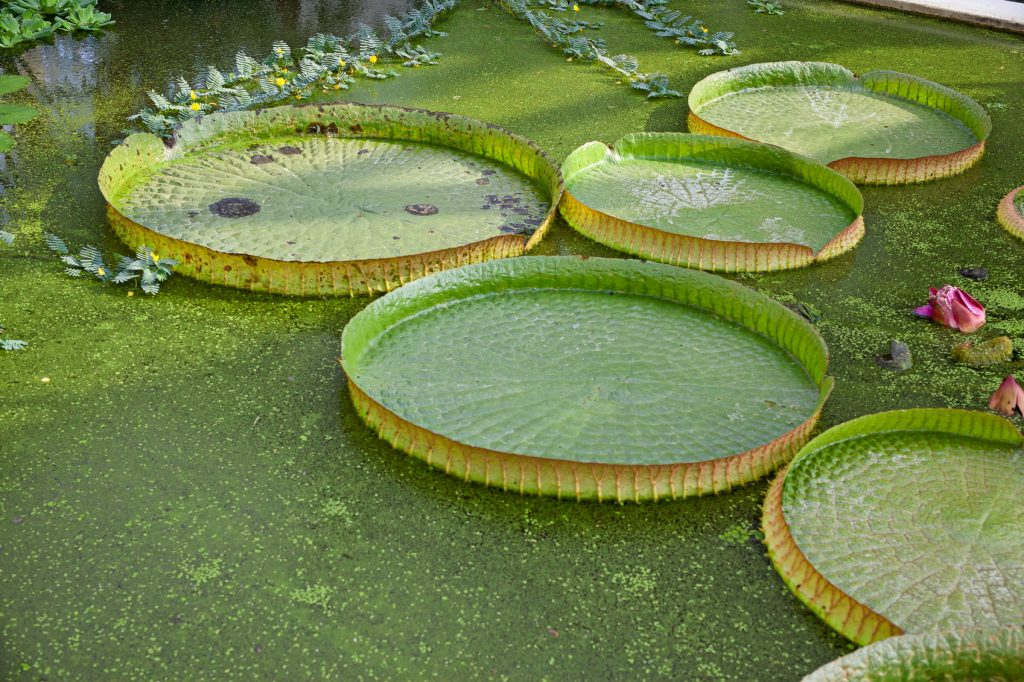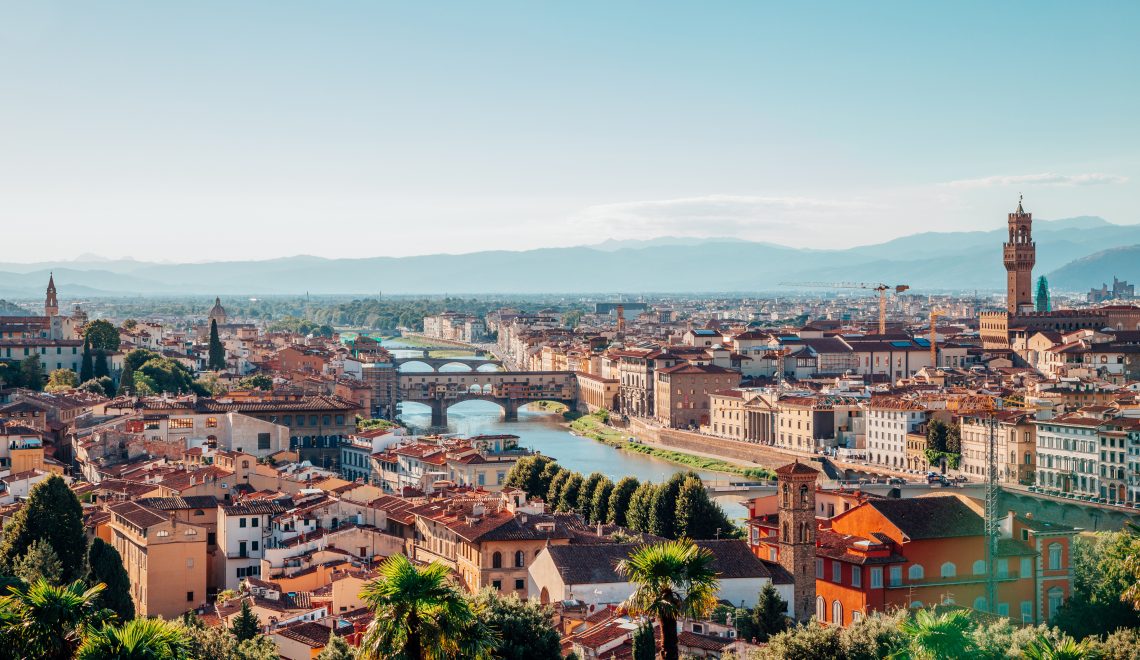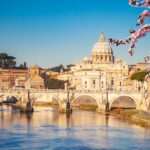
You can certainly visit Padua in a day, but here are five reasons to stay in the city for a full weekend. A hint. A chicken and a bike.
Are you planning a day-trip visit to Padua? Of course, with the high-speed train you can arrive early in the morning, enjoy a pleasant stroll downtown, visit the most important churches, have a coffee at one of the historic venues, and leave again in the late afternoon.
You will soon realize, however, that time flies, and that in Padua there are actually many things to see and do! Its history, its architecture and the wonderful landscape of the surrounding Euganean Hills… We give you at least five good reasons to visit Padua in a weekend, and we are sure you will like it a lot!
What to see and do in Padua on a weekend
- The Botanical Garden and the University: knowledge at large
- The historic old town: squares, palaces and a special café
- Churches and basilicas: Giotto’s starry sky
- A bike ride surrounded by nature
A Weekend in Padua: your perfect two-day itinerary
| Day | Time of Day | Activity |
|---|---|---|
| Saturday | Morning | Visit the Botanical Garden and the University of Padua – dive into centuries of knowledge and scientific heritage. |
| Late Morning | Stroll through the historic city center: explore Piazza delle Erbe, Piazza dei Signori, and stop at the legendary Caffè Pedrocchi for a coffee break. | |
| Afternoon | Discover Padua’s artistic and spiritual side with a visit to its churches and basilicas – don’t miss the Scrovegni Chapel, home to Giotto’s starry masterpiece. | |
| Evening | Enjoy a relaxed dinner featuring local cuisine: try bigoli pasta, baccalà alla vicentina, or a seasonal risotto, paired with wine from the Euganean Hills. | |
| Sunday | Morning | Go for a bike ride surrounded by nature – follow the scenic riverbanks or venture toward the Euganean Hills. |
| Lunch | Stop for lunch in a countryside trattoria and savor authentic Veneto flavors. | |
| Afternoon | Free time for shopping in the old town or an optional visit to the Eremitani Civic Museums. | |
| Late Afternoon | Wrap up your weekend with a traditional spritz and cicchetti in one of Padua’s lively bars. |
1. The Botanical Garden and the University: knowledge at large
For centuries, Padua has been one of Italy’s most cultured cities. Its university dates back to the 13th century and, some centuries ago, its students even had the honor of attending Galileo Galilei‘s lectures. Its medical and scientific tradition continues to attract students from all over the country, making Padua a people-friendly town that is both young and dynamic.

Moreover, academic knowledge often has the virtue of not remaining closed within the walls of the Palazzo Bo. One example is the beautiful Botanical Garden, founded in 1545 and still – an almost unique case in the world – virtually unmoved from its original location.

They cover an area of about 22 thousand square meters and enclose more than 6000 cultivated plants and 3500 species. Take all the time you need for a relaxing walk among lots of greenery-it will win you over even if you don’t have a green thumb!
2. The historic old town: squares, palaces and a special café
The historic center of Padua is a jewel enclosed within the imposing 16th-century city walls. Its interior contains fabulous squares, gates and Roman porticoes, linked together by labyrinth of streets and cobbled lanes among which getting lost becomes a pleasure.

You can’t pass by without stopping in Piazza delle Erbe when the market is on. Also Prato della Valle is worth a visit to see the intriguing faces of the statues arranged along the entire ellipse of the square. And what about the wonderful medieval buildings, like the Palazzo della Ragione?
Coffee break? Yes, but you must try Caffé Pedrocchi! Calling it simply a café doesn’t do it justice: it’s an institution of the city since 1831, and literally, pieces of history have passed through here; indeed, some of the Risorgimento uprisings in 1848 were planned right at its tables.

It is known all over the world for its specialty, Caffè Pedrocchi flavored with mint, but today it also serves excellent pastry and culinary specialities. An interesting fact? It has been open day and night since 1916, earning the nickname of “café without doors.”

3. Churches and basilicas: Giotto’s starry sky
Spirituality has always been a very important dimension for Padua, which every year welcomes thousands of pilgrims from all over the world devoted to St.Anthony. The basilica dedicated to the saint is an architectural work of undisputed value and original forms, which is certainly worth visiting.

Then, if you really want to remain speechless, book your entrance to the 14th-century Cappella degli Scrovegni. Here you can admire Giotto’s masterpiece: a series of frescoes depicting the most important scenes of the Gospel using techniques that anticipated the Renaissance. Why such speechless amazement? Well, in addition to the stunning painting, you only need to look up at the ceiling to have a breathtaking starry sky over your head!

4. A bike ride surrounded by nature

Padua is not only art and urban context. Nature lovers will be in their natural element by cycling along one of the many cycle paths that, starting from the center, unfold towards the Euganean Hills.
One of the most exciting routes is undoubtedly the outer river circuit, which follows the route of the canals that flow into the Brenta: an experience not to be missed, especially if you are traveling with children.

You can also take other routes, starting from Piazzola sul Brenta or Abano Terme, always discovering the richness of these lands.
5. Good food: surely you’ll take your time dining – won’t you?
You may have already guessed that such a great cultural and territorial richness can be matched only by its food!. The colors, scents, flavors, and experiences of Paduan cuisine reflect a centuries-old tradition that is simple and strogly linked to local cstoms and ingredients.

So try to arrive with an appetite – just the thing to enjoy the great local delicacies! You could start with cold cuts: Berico-Euganeo PDO ham, the soppressa or luganega sausage, just to name a few. Bigoli, the traditional fresh pasta, or risotto, are certainly the first courses that must feature in a meal, but the real top local cuisine dish is gallina padovana – hen in the Padua style.
To be precise, the local name for this dish is galina imbriaga (drunk foul) because it’s cooked with wine and brandy. A real treat, to be washed down with a well-chilled wine from the Euganean Hills. You’re already hungry, aren’t you?
How to get to Padua
If we’ve convinced you to stay in town for an entire weekend, all you have to do is book your trip. Choose your train to Padua with one of Italo’s many daily connections from Bologna, Florence, Naples, Venice, Rome and Ferrara (starting Dec. 11). Did you know that from Bologna you can reach Padua in less than an hour?







